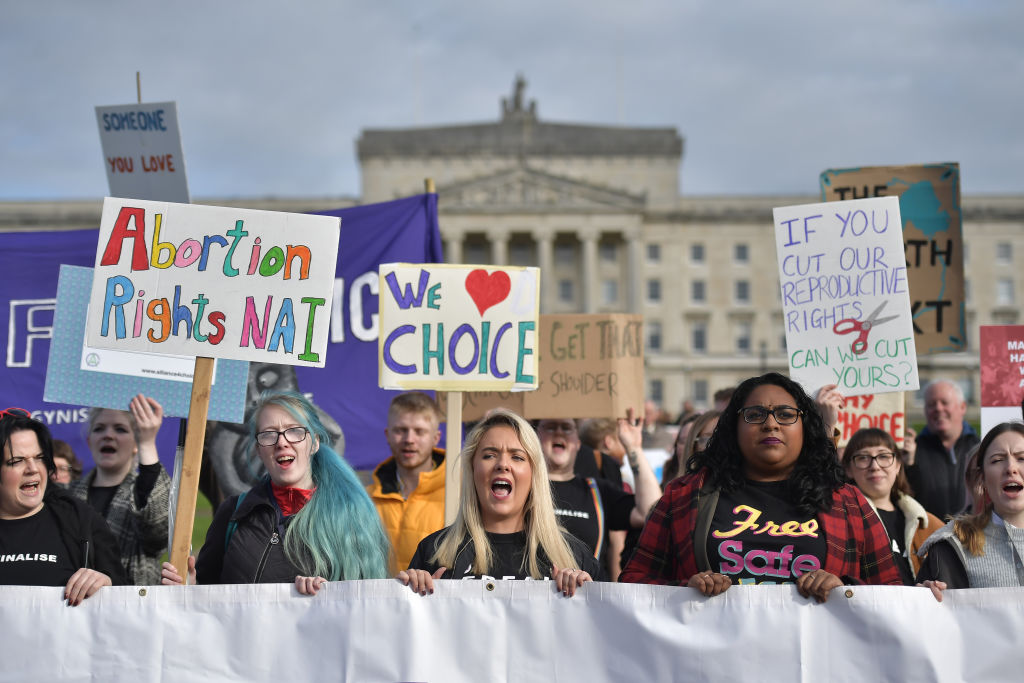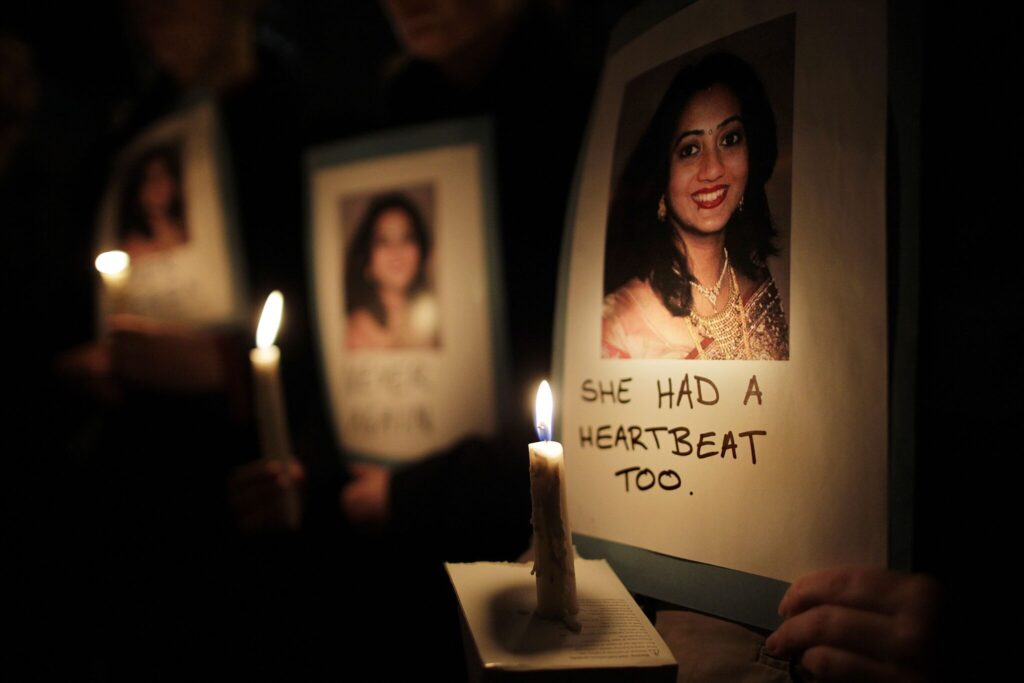
Though unsurprising, the Supreme Court of the United States has officially ruled to overturn the legal right to abortion, deeming foundational reproductive healthcare unconstitutional. This ruling echoes the abortion ban in Ireland that was in place from 1861 until 2018, which criminalized abortion and caused disastrous outcomes for pregnant people and their families. Over the course of time, it became increasingly obvious to the majority of Irish people that it was a damaging law that needed to change, which they did four years ago.
Citizens of the United States can learn a great deal from Ireland’s democratic approach to reversing the criminalization of abortion, which took it out of the courts and put it directly into the hands of the people. If Roe is unconstitutional, as the Supreme Court asserts, then it is time to change the Constitution by popular vote, just as they did in the Republic of Ireland.
In Ireland, as in historical colonies and independent nation-states around the globe, women have had the need for life-saving healthcare to terminate pregnancies forever. As early as during the life of St. Brigid of Kildare (451-525 A.D.), folklore and oral history records indicate that this revered saint blessed a nun who broke the vow of chastity and became pregnant, thus enabling the fetus to disappear. Throughout modern history in Ireland, when women were forced to have unwanted pregnancies, they turned to suicide out of desperation, they were ordered into asylums known as Magdalene Laundries to hide their “shameful” pregnancies, and they faced increased chances of violence at the hands of men who do not want to be named as fathers for unwanted children or family members who did not want to bring shame upon the family.
As in Ireland, there is a strong link around the world between increased attempts at femicide (the murder of women) and the inability to terminate an unwanted pregnancy, a lesson from comparative history that is clearly predictable in the United States under the current ruling.
In more recent times, we see many examples of extreme trauma and horrific deaths among women who needed to terminate an unwanted pregnancy in cases of rape, incest and fatal maternal conditions in Ireland. Hundreds of thousands of Irish women experienced great social and economic hardship to travel to England to terminate a pregnancy between 1983 and 2018.
Take one 1992 example, in which a 14-year-old girl who was repeatedly sexually abused over a period of two years and became pregnant by her pedophile rapist. The girl’s parents sought to take her to England to terminate the pregnancy, a request legally denied even when she became suicidal.
In 2012, Savita Halappanavar, a well-educated, married, medical professional eagerly awaited the birth of her first child. When she rushed to the hospital with a spontaneous miscarriage, accompanied by her husband, physicians refused to accelerate the process and a tragic loss turned into a horrific death. Halappanavar died from sepsis in front of her husband days after being denied a medical termination. Her preventable and grotesque death became a national and international rallying cry to change abortion laws. In related investigations from 2016 and 2017, the United Nations Human Rights Committee concluded that Ireland’s abortion ban was discriminatory and subjected women to cruel, inhuman and degrading treatment that violated women’s human rights.
As in Ireland, the Constitution of the United States of America can be changed.

Indeed, the cumulative effect of such ongoing gendered misery, suffering, violence and lack of rights caused increased attention to the problematic criminalization of abortion in Ireland and the need to change it through democratic processes. After several failed attempts to challenge the discriminatory and harmful law through cases brought before the attorney general, Irish Supreme Court and the European Court of Human Rights, the population turned toward legislation and constitutional reform. To do so, the Irish people set in motion a substantial legislative process and concomitant public discussion.
The Parliament convened a Citizen’s Assembly made up of a chairperson appointed by the government and 99 ordinary citizens from a representative cross-section of Irish society in terms or age, race, gender, class and region of the country to review, discuss and deliberate upon the issue. The Citizen’s Assembly recommended to Parliament that a national popular referendum be held to vote on the issue of repealing the ban and changing the Eighth Amendment of the Irish Constitution to do so. National heated discussion and debate took place around the country in public forums as well as in private spaces of the home and family.
In May 2018, 64.1 percent of all eligible citizens went to the polls and voted by substantial majority—66.4 percent—to change the Constitution to allow for termination of pregnancy as a basic right.
The history and process of the Irish case on the criminalization of abortion and its disastrous effects reminds us in the United States of a similar path that is before us when facing the new discriminatory ban on the right to abortion. As in Ireland, the Constitution of the United States of America can be changed. There are two mechanisms to do so.
The first is through a proposal to amend that is introduced and passed by a two–thirds vote in both the House of Representatives and the Senate. The Constitution has been amended in this way 27 times in the history of this country.
The other mechanism is through a national constitutional convention. In the United States context, a constitutional convention must be called for by two-thirds of state legislatures. While this option is a foundation of American democracy, it has never been successfully exercised, although there has been interest in doing so regarding fiscal matters, such as a balanced budget, in recent years. It is an unprecedented action in the United States and one that certainly challenges the power of the judicial branch of the government.
Checks and balances are at the core of American political structure; democracy, freedom of choice and equality are married together in the political foundations of this country. It is now time for us to engage the processes of constitutional reform that our founding fathers gave us in order to ensure the right to choice is ensured for all citizens in the United States regardless of gender, race or religion.
Sign and share Ms.’s relaunched “We Have Had Abortions” petition—whether you yourself have had an abortion, or simply stand in solidarity with those who have—to let the Supreme Court, Congress and the White House know: We will not give up the right to safe, legal, accessible abortion.
Up next:





